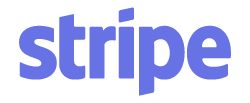
Accessibility in Online Assessments
Software accessibility standards are increasingly important in the digital age, as more and more people rely on software and digital services to do their everyday tasks. Accessibility standards ensure that everyone, regardless of their abilities, can use these services with ease.
The World Wide Web Consortium (W3C) has established the Web Content Accessibility Guidelines (WCAG) which are used to measure the accessibility of web content and applications. WCAG outlines the technical standards for making web content and applications more accessible for people with disabilities. The guidelines provide detailed recommendations for designing websites, web applications, mobile applications, and other digital products that are accessible to all users.
Additionally, the United States Access Board has issued Section 508 Standards which require federal agencies to make their electronic and information technology accessible to people with disabilities. The standards are based on WCAG, but also include specific requirements for hardware and software.
Software developers should take into account these accessibility standards when creating products. Accessible software is beneficial for all users, as it allows people with disabilities to be able to access and use technology products. Accessible software can also make products easier to use for everyone, leading to better user experience.
YouTestMe GetCertified software is designed to be user-friendly, easy to navigate, and accessible to users with disabilities. This includes making sure that our platform is compatible with assistive technologies such as screen readers, providing alternative text for images, and ensuring that forms are navigable and understandable. Users with visual, auditory, cognitive, motor disabilities, or other impairments deserve equal access to technology.
YouTestMe complies with all major accessibility standards:
-
- Section 508 – required for federal agencies
- WCAG (Web Content Accessibility Guidelines) – general online accessibility guidelines
- EN 301 549 – European accessibility standard
These standards ensure an inclusive user experience, by offerring:
-
- Text-to-speech, high-contrast theme, enlarged cursor, large fonts – for blind and visually impaired users
- Closed captioning – for deaf or low-hearing users
- Keyboard shortcuts – for users with limited mobility
With our accessibility mode, users can customize their experience to better suit their needs. Accessibility mode offers a range of options that can help users with a variety of needs, including those with visual impairments, hearing impairments, physical disabilities, and cognitive disabilities. Features include changing font sizes, increasing contrast, and enabling closed captioning.
These standards are also important for businesses, as they can help to increase their customer base and reach. People with disabilities are more likely to use services that meet accessibility standards, and businesses can benefit from the loyalty of this customer base. Additionally, accessibility standards can help businesses save money by avoiding expensive accessibility lawsuits.
All in all, software accessibility standards are an important part of the digital age. They ensure that everyone can use digital services, regardless of their abilities, and they can help businesses save money while providing a better experience for their users.
We built a knowledge examination platform that meets all your requirements.
Contact us for a Live Demo or a 30-Day Free Trial.




